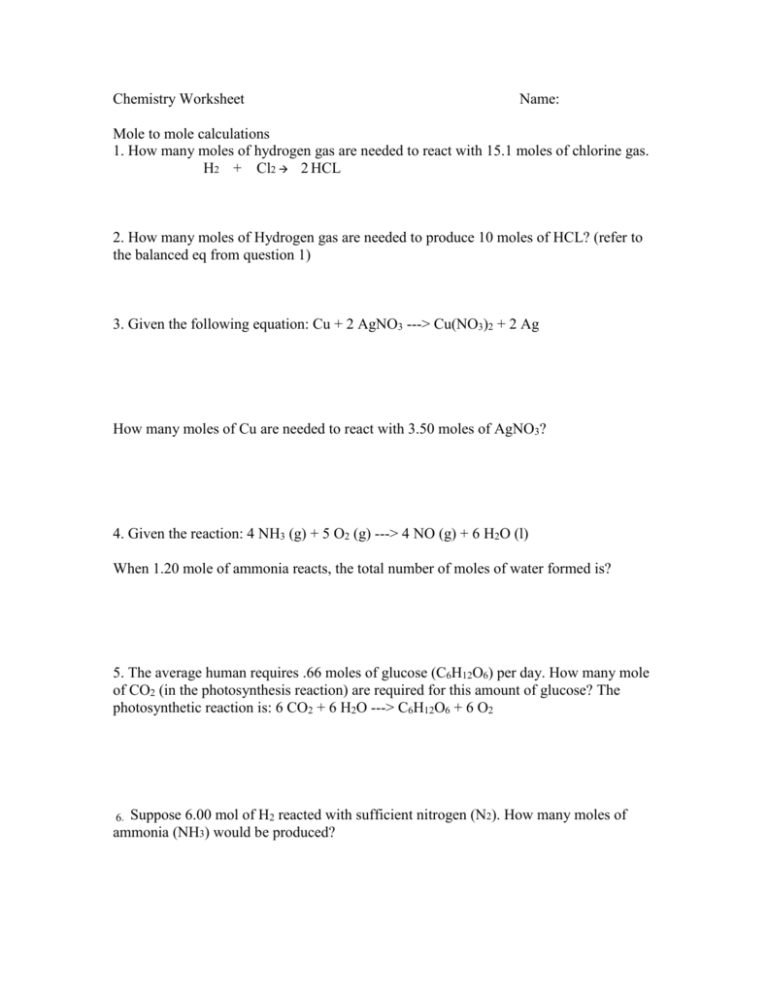Mole to Mole Worksheet
advertisement

Chemistry Worksheet Name: Mole to mole calculations 1. How many moles of hydrogen gas are needed to react with 15.1 moles of chlorine gas. H2 + Cl2 2 HCL 2. How many moles of Hydrogen gas are needed to produce 10 moles of HCL? (refer to the balanced eq from question 1) 3. Given the following equation: Cu + 2 AgNO3 ---> Cu(NO3)2 + 2 Ag How many moles of Cu are needed to react with 3.50 moles of AgNO3? 4. Given the reaction: 4 NH3 (g) + 5 O2 (g) ---> 4 NO (g) + 6 H2O (l) When 1.20 mole of ammonia reacts, the total number of moles of water formed is? 5. The average human requires .66 moles of glucose (C6H12O6) per day. How many mole of CO2 (in the photosynthesis reaction) are required for this amount of glucose? The photosynthetic reaction is: 6 CO2 + 6 H2O ---> C6H12O6 + 6 O2 6. Suppose 6.00 mol of H2 reacted with sufficient nitrogen (N2). How many moles of ammonia (NH3) would be produced? 7. We want to produce 2.75 mol of NH3. How many moles of nitrogen would be required? (Refer to the balanced equation in problem 6) 8. Write the balanced equation for the reaction of acetic acid with aluminum hydroxide to form water and aluminum acetate. Using the equation, determine the moles of aluminum acetate that can be made if you do this reaction with 12.5 moles of acetic acid. 9. How many moles of O2 should be supplied to burn 1 mol of C3H8 (propane) molecules in a camping stove? (think combustion) 10. Calculate the moles of aluminum oxide produced when 10 moles of aluminum burns in oxygen. -2 11. The human body needs at least 1.03 x 10 mol O2 every minute. If all of this oxygen is used for the cellular respiration reaction that breaks down glucose, how many moles of glucose does the human body consume each minute? C6H12O6(s) + 6 O2(g) -----> 6 CO2(g) + 6 H2O(l)





